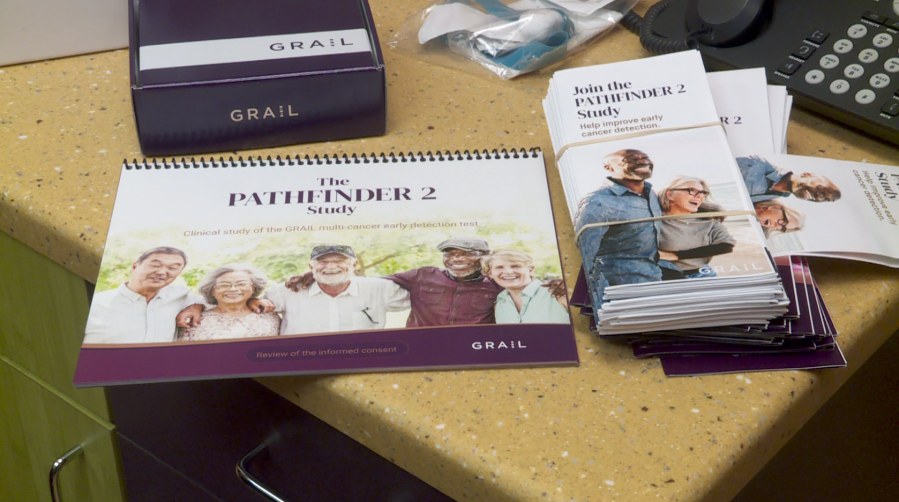Blood draw cancer detection test in clinical trials at OU Stephenson Cancer Center
OKLAHOMA CITY (KFOR) – A simple blood draw may be able to detect over 50 types of cancer. It’s called a “multi-cancer early detection test.” The test is in clinical trials at OU’s Stephenson Cancer Center.
“Pretty simple, quick and easy,” research staffer Misty Walker said.
LOCAL NEWS: OU tapped for U.S. Space Command’s Academic Engagement Enterprise
Walker unpacked the little kit for KFOR Wednesday that could lead the way to changes in cancer detection. The Pathfinder 2 Study kit comes in a small box and contains a few documents for patients in the clinical trial to fill out, 4 tubes for 10 milliliters of blood each and a butterfly for blood drawing.
Right now, people mostly get scanned for five types of cancer. Those are breast, colon, lung, prostate and cervical cancers because they account for half of all detectable cancers. This kit can potentially catch more than 50 types of cancer and where it is in the body with a simple drawing of blood.
“The screening test is an opportunity for you to see if you maybe can just take those other half and maybe get them early enough to actually change the outcome for those patients,” Professor and Chair of Radiation Oncology Dr. Jerry Jaboin said.
Jaboin is one of two doctors overseeing the clinical trial at the center. After blood is drawn, they look for signals released by cancer cells into the bloodstream to see if it’s there. Then, they follow patterns to see where it’s coming from.
“Each iteration of the test is using that information to then improve itself,” Jaboin said.
Patients with a positive signal undergo further testing for the cancer that was signaled. Those tests are covered by the trial. If positive, tumors are usually found within about 60 days as well if they’re present. If they have a false positive, a four to six month work up is done and they touch base with the patient for the following three years. A positive signal in the trials has usually led patients being officially diagnosed about 40 percent of the time, that’s similar to mammograms and colonoscopies. Jaboin said this can help with less testing though since it detects multiple cancers in a blood draw.
“If you could have one test that takes care of a bunch of tumors, right, that would be more cost effective, potentially less anxiety provoking,” he said.
LOCAL NEWS: OKC woman picking up pieces after storm damage
More testing is needed to make sure it’s highly sensitive and useful for all populations of people. This trial is one of several that started back in 2016. Jaboin said after the pandemic in 2021 a lot of findings came out and everything has moved quicker since. He said he’s hopeful the outcome of the tests can eventually spark FDA approval, insurance coverage and become more common in the future. The tests are commercially available, however, they can run patients about $1,000.
“We’re also hopeful that if it does happen, people get all the benefits, all the other things downstream,” Jaboin said.
This clinical trial is set to be over in August. More can be found on it here.
Officials say more trials will eventually take place in the future.
Copyright 2024 Nexstar Media, Inc. All rights reserved. This material may not be published, broadcast, rewritten, or redistributed.
For the latest news, weather, sports, and streaming video, head to KFOR.com Oklahoma City.


